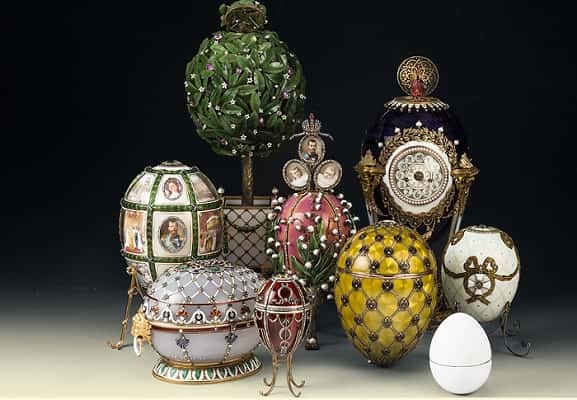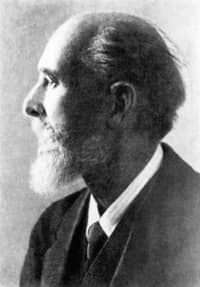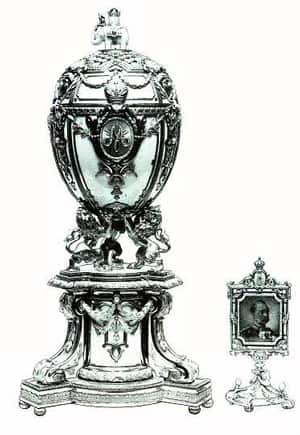The Amazing Story of the Missing Fabergé Eggs

The story of the Fabergé eggs is one full of beauty, mystery, and history. These eggs are not ordinary Easter eggs. They are masterpieces made of gold, jewels, and fine enamel by the famous Russian jeweler Peter Carl Fabergé.
Today, many people still wonder about these eggs, especially the missing ones. In this article, we will learn about how the Fabergé eggs were made, their importance in Russian history, and what happened to the ones that disappeared.
The Beginning of a Beautiful Tradition
A Gift from a Loving Husband
In 1885, Tsar Alexander III of Russia wanted to give his wife, Empress Maria Feodorovna, a special gift for Easter. Easter is a very important holiday in the Russian Orthodox Church, and it is a time of joy and renewal. Tsar Alexander III did not want to give her a simple gift. He wanted something extraordinary that she would never forget.
He chose Peter Carl Fabergé, a very talented jeweler, to make this gift. Fabergé was already known for his work with precious metals and jewels. The tsar asked him to create an Easter egg that was unlike any other. This marked the beginning of an annual tradition that would continue for many years.

The First Fabergé Egg: The Hen Egg
The first egg was known as the Hen Egg. At first glance, the egg looked simple. It had a smooth, white shell made of enamel. But when you opened it, you found a small surprise inside. The egg had a yolk made of gold. When the yolk was opened, a tiny golden hen was revealed. Inside the hen, there was a small diamond crown and a ruby pendant.
The Empress was very happy with the gift. She loved the surprise and the fine craftsmanship. This joy led to the creation of many more eggs over the years, each one more detailed and creative than the last.
The Creation of 50 Imperial Eggs
Over a span of more than 30 years, the House of Fabergé made a total of 50 Imperial eggs for the Russian royal family. These eggs were not just gifts; they were works of art. Each egg told a story and captured a moment in Russian history. Here are some of the most famous ones:
The Rosebud Egg (1895)
The Rosebud Egg is one of the most beautiful examples of Fabergé’s work. Inside the egg, there is a small yellow rosebud. This rosebud symbolized hope and new beginnings for the young Tsarina. The delicate design and vibrant color of the rose made this egg a true masterpiece.
The Coronation Egg (1897)
The Coronation Egg was created to celebrate the coronation of Empress Alexandra Feodorovna. This egg is very special because it contains a tiny replica of the imperial coach. The little coach even had moving wheels and suspension, showing Fabergé’s skill in creating mechanical wonders in such a small space. It was a fitting tribute to the grandeur of the Russian monarchy.
The Trans-Siberian Railway Egg (1900)
The Trans-Siberian Railway Egg celebrated the completion of the famous Trans-Siberian Railway. Inside this egg, there was a small model of a train made of platinum and gold. It also had a wind-up mechanism that allowed the train to move. This egg honored the progress and modern achievements of Russia during that time.
Each egg was a story in itself. They were made with great care and attention to detail. The eggs were filled with hidden surprises, from tiny portraits to moving parts, and they celebrated important events and traditions in Russian history.
The Fall of the Romanovs and the Fate of the Eggs
A Time of Change in Russia
The beautiful tradition of creating Fabergé eggs came to a tragic end with the Russian Revolution in 1917. The revolution changed the course of Russian history forever. The Romanov family, who had ruled Russia for centuries, was overthrown. The royal family was executed, and many of their treasures were taken by the new Soviet government.
The Fabergé eggs were considered state property after the revolution. They were carefully cataloged and stored away. However, the new Soviet leaders needed money. In the 1920s and 1930s, the government sold many of the eggs to collectors from other countries.
The Mystery of the Missing Eggs
Out of the 50 Imperial eggs made by Fabergé, seven eggs have gone missing over the years. These missing eggs include:
Hen with Sapphire Pendant Egg (1886): This egg was similar to the very first Hen Egg but held a sapphire pendant. It was last known to be in the possession of the Soviet government before it disappeared.
Cherub with Chariot Egg (1888): This egg featured a cherub and a small chariot. Today, we only know about this egg from old descriptions and records.
Nécessaire Egg (1889): This egg was decorated with diamonds and came with tiny toiletry items. It symbolized personal luxury and beauty.
Nobel Ice Egg (1913): Made for a Swedish-Russian oil baron, this egg is sometimes counted among the Imperial eggs because of its special significance.
Royal Danish Egg (1903): This egg celebrated the Empress’s Danish heritage. It had paintings of Danish royal palaces and showed the connection between Russia and Denmark.
Alexander III Commemorative Egg (1909): Made to honor Tsar Alexander III, this egg was decorated with diamonds and platinum. It celebrated the life and achievements of the tsar.
Constellation Egg (1917): This egg was not finished because of the revolution. It was meant to include sapphire glass and a clock mechanism but was left incomplete when history took a dramatic turn.
The mystery of these missing eggs has fascinated people for many years. Historians, art collectors, and treasure hunters have all wondered where these eggs might be today. Some believe that the eggs are hidden away in private collections, passed down from one generation to the next. Others think that they were lost or destroyed during wars and other turbulent times in history.

The Resurfacing of a Lost Egg
Even though many eggs were lost during the chaos of the revolution, hope was not lost. In 2011, a surprising event took place that sparked excitement among collectors and historians. The Third Imperial Egg, made in 1887, was found again.
The Third Imperial Egg’s Journey
This egg was discovered in a flea market in the United States. Its owner had bought it for a very low price, thinking it was just scrap metal. However, after doing some research online, the owner realized that it was much more than that. The egg turned out to be an original Fabergé egg, a piece of Russian history worth millions of dollars.
The story of the Third Imperial Egg is a reminder that sometimes lost treasures can be found when we least expect them. It has also given hope that some of the missing eggs might still be out there, waiting to be discovered.
The Art and Craftsmanship of Fabergé Eggs
What Made the Eggs So Special?
The Fabergé eggs are famous for many reasons. First, they were made by a master craftsman, Peter Carl Fabergé. His skill with precious metals, enamel, and gemstones was unmatched. Each egg was designed to be a work of art that could be enjoyed by all who saw it.
Hidden Surprises and Moving Parts
One of the most exciting features of many Fabergé eggs was the hidden surprise inside. Each egg had a secret compartment that held a miniature object. These objects could be anything from a tiny portrait to a moving mechanical toy. The creativity behind these hidden surprises made the eggs even more special.
Symbolism and Stories
Every Fabergé egg told a story. Whether it was celebrating a special event, honoring a family member, or symbolizing hope and renewal, each egg was more than just a decorative object. It was a piece of history, capturing the spirit of its time. This symbolism is one of the reasons why the eggs continue to fascinate people today.
The Legacy of the Fabergé Eggs
A Lasting Impression on Art and History
The Fabergé eggs have left a lasting mark on art and history. They remind us of a time when craftsmanship was a way of life and every piece of art told a story. Even though many of the eggs have disappeared or changed hands over the years, their legacy lives on.
Influence on Modern Art
Modern artists and jewelers still look to Fabergé’s work for inspiration. The combination of intricate design, hidden surprises, and historical symbolism has influenced many modern art pieces. Collectors and museums around the world cherish any Fabergé egg they can find, and exhibitions of these eggs continue to draw crowds.
The Search for Lost Treasures
The mystery of the missing Fabergé eggs adds an extra layer of excitement to their legacy. Treasure hunters, historians, and art collectors continue to search for clues about the whereabouts of these lost pieces. This ongoing quest keeps the story of Fabergé and his incredible eggs alive, inviting new generations to explore and learn about this fascinating chapter of history.
The Importance of Preserving History
Learning from the Past
The story of the Fabergé eggs is not just about beautiful objects; it is about history, art, and culture. These eggs help us remember the rich traditions of the Russian imperial family and the high level of craftsmanship that was once common in Europe. By studying these eggs, we learn more about the lives, values, and traditions of people from the past.
Protecting Our Cultural Heritage
Many of the Fabergé eggs have been lost or are hidden away in private collections. This makes it very important for historians, museums, and collectors to work together to preserve what remains. By protecting these treasures, we ensure that future generations can also learn from and enjoy the legacy of Fabergé’s work.
Education and Public Interest
Exhibitions of Fabergé eggs in museums around the world help educate the public about Russian history and the art of jewelry making. These displays not only showcase the beauty of the eggs but also tell the story of a time when art was used to express love, power, and tradition. Every visitor leaves with a deeper appreciation for the intricate details and historical significance of these masterpieces.
Modern-Day Fascination and the Market for Fabergé Eggs
A High-Value Collectible
Today, Fabergé eggs are among the most sought-after items in the world of art collecting. Their history, craftsmanship, and rarity make them extremely valuable. Auctions for Fabergé eggs often reach millions of dollars, reflecting their importance and desirability.
Online Searches and Museums
Many people now search online to learn more about the Fabergé eggs. Websites, blogs, and online exhibitions provide a wealth of information. Museums around the world also have collections of these eggs on display, drawing art lovers and history enthusiasts alike.
The Role of Technology
With modern technology, it is easier than ever to study and catalog historical treasures. Digital archives and high-resolution photography have allowed experts to analyze every detail of the eggs. This not only helps in preserving their history but also in the ongoing search for the missing pieces.
The Fabergé eggs are much more than decorative objects. They are a blend of art, history, and mystery that capture the spirit of an era. Beginning as a loving gift from Tsar Alexander III to Empress Maria Feodorovna, these eggs evolved into treasured symbols of the Russian imperial family. Each egg tells a unique story, filled with hidden surprises and intricate details that showcase the genius of Peter Carl Fabergé.
Today, even though many of the eggs have been lost or hidden away, the legacy of Fabergé lives on. Their beauty and historical importance continue to fascinate collectors, historians, and art lovers around the world. The ongoing search for the missing eggs adds to their mystique and reminds us of the enduring value of cultural heritage.
Whether you are an art enthusiast, a history buff, or simply someone who loves a good mystery, the story of the Fabergé eggs offers a glimpse into a world where beauty, craftsmanship, and history come together in perfect harmony. As we look to the future, there is always hope that more of these lost treasures will be found, allowing us to reconnect with an extraordinary piece of our past.
FAQ Section
1. What Are Fabergé Eggs?
Fabergé eggs are beautifully crafted Easter eggs made by Peter Carl Fabergé and his team. They were created for the Russian royal family and are famous for their hidden surprises and exquisite design.
2. Why Were Fabergé Eggs Made?
The tradition of making Fabergé eggs began when Tsar Alexander III wanted to give a unique and luxurious Easter gift to his wife, Empress Maria Feodorovna. This tradition continued for many years, with each egg celebrating important events in Russian history.
3. How Many Imperial Eggs Were Made?
A total of 50 Imperial Fabergé eggs were made for the Russian royal family between 1885 and 1917. Each egg was a unique work of art that told a story and contained hidden surprises.
4. What Happened to the Missing Fabergé Eggs?
After the Russian Revolution of 1917, many of the Fabergé eggs were taken by the Soviet government and sold to raise funds. Out of the 50 eggs, seven have gone missing. Some believe these eggs may still be hidden in private collections, while others think they were lost or destroyed during times of war and chaos.
5. What Is the Significance of the Fabergé Eggs Today?
Fabergé eggs are important not only because of their beauty and craftsmanship but also because they are a part of Russian history. They remind us of the rich traditions and artistic achievements of a bygone era. Today, they continue to inspire modern art and attract collectors and historians from around the world.
6. Can Fabergé Eggs Be Found in Museums?
Yes, many museums around the world have Fabergé eggs on display. These exhibitions allow the public to admire the detailed craftsmanship and learn about the fascinating history of the eggs and the royal family they once adorned.
7. What Makes Fabergé Eggs Unique?
Fabergé eggs are unique due to their intricate design, the use of precious materials like gold, diamonds, and rubies, and the hidden surprises within each egg. Their blend of art, history, and mystery sets them apart from other decorative objects.
8. How Do Experts Verify a Fabergé Egg’s Authenticity?
Experts use detailed historical records, modern technology such as X-ray imaging, and careful physical examination to verify the authenticity of a Fabergé egg. Provenance, or the egg’s documented history, also plays a key role in determining its authenticity.
9. Is It Possible That More Missing Eggs Will Be Found?
Yes, there is always hope that more of the missing Fabergé eggs will be discovered. The surprising recovery of the Third Imperial Egg in 2011 shows that treasures can be found in unexpected places. Ongoing research and improved technology continue to raise the possibility of uncovering more lost pieces.
10. How Can I Learn More About Fabergé Eggs?
To learn more about Fabergé eggs, you can visit museums that feature Russian art, read books and articles about Russian history and art, or explore trusted online resources dedicated to Fabergé and his work. Engaging with experts in the field through lectures and exhibitions is also a great way to deepen your understanding.
